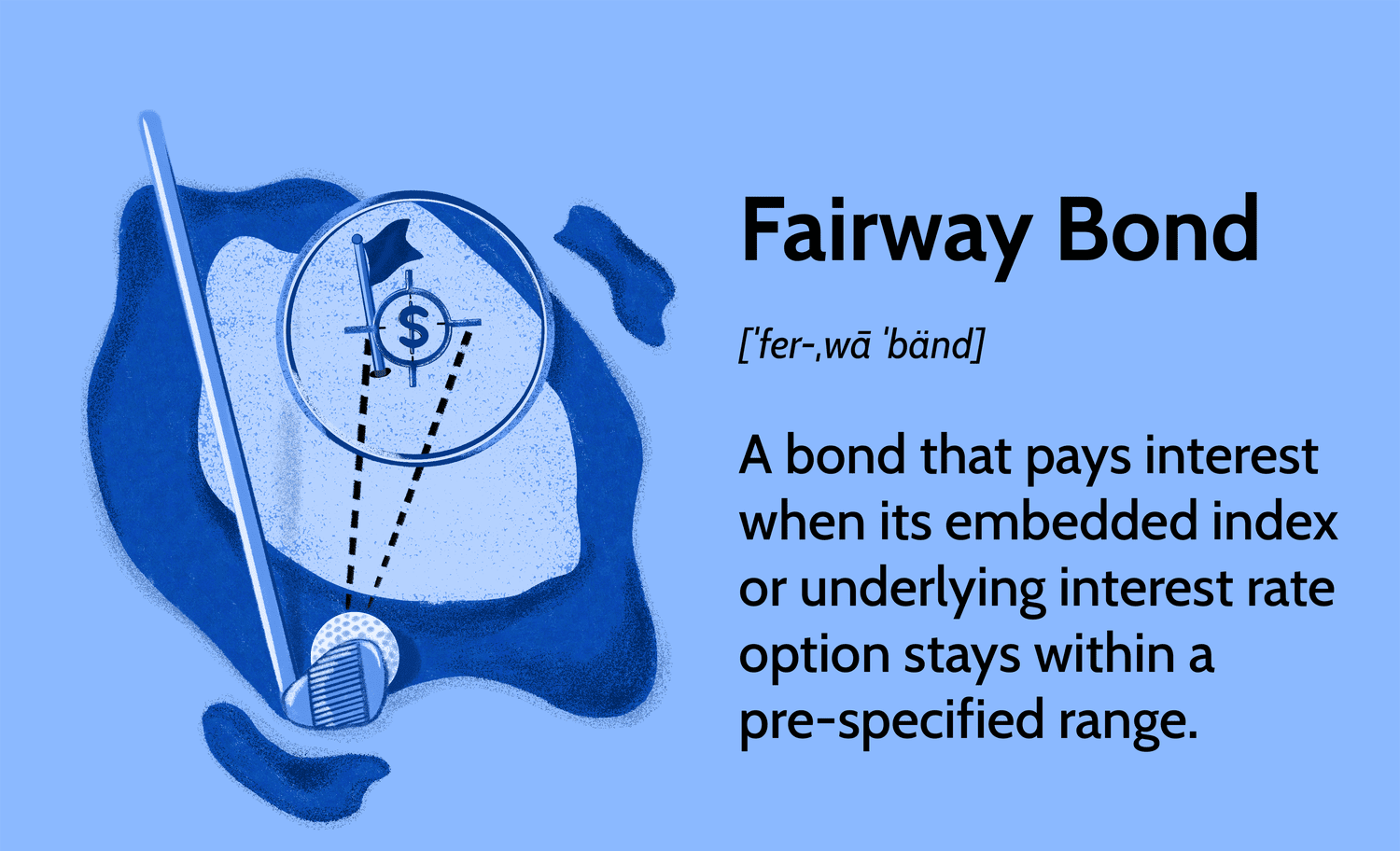What Is a Fairway Bond?
A fairway bond has a floating interest rate or an interest rate option that underlies the bond, which pays interest when the embedded index or underlying interest rate option remains within a specified range. The value of a fairway bond is at its maximum when the interest rate the bond is indexed to remains within its pre-set channel over the bond's life.
Favorable aspects of a Fairway Bond
Conservative investors often like Fairway bonds. These investors select the securities in the goal of maximizing their return when they assume that the option will stay within a particular range over the time period in which the bonds are kept. Fairway bonds are gaining popularity among conservative investors. During a sideways market, which happens when the price of a particular investment moves within a range without establishing any obvious up or downtrends, investors in fairway bonds may be able to make the maximum profit.
When it is anticipated that interest rates may increase in the near future, investors may also want to consider purchasing Fairway bonds as an investment option. The bond market is often avoided by a large number of investors at times when interest rates are expected to be higher. This is because investors do not want to get tied into the lower coupons that are now available in the event that rates do rise higher. Investors in fairway bonds, on the other hand, have the opportunity to profit from rising interest rates when they materialize by acquiring bonds whose rates will stay within or land within the preset range, even if the anticipated increase is taken into account.
At worst, even if the embedded index or interest rate option of a fairway bond stays out of range, or in "the rough," for the whole of the security's existence, an investor may still anticipate a return of the bond's principal at the bond's maturity.
Comparing the Interest Rate Option with the Floating Interest Rate
Generally speaking, Fairway bonds are characterized by a short-term floating interest rate or an interest rate option. One kind of interest rate is known as a floating interest rate, and it fluctuates in tandem with the overall market or with an index. It is also possible to refer to it as a variable interest rate due to the fact that it might change throughout the course of the term of the debt obligation. It is for this reason why fairway bonds are also sometimes referred to as index floaters.
One kind of financial derivative is known as an interest rate option, and it gives the holder the opportunity to profit from fluctuations in interest rates. Like an equity option, it may be either a put or a call option, depending on the circumstances. Generally speaking, the movement is based on an underlying benchmark rate, such as the yield on the 10-year Treasury note.
When Is the Right Time to Purchase a Floating Rate Note?
The word "floater" refers to a floating rate note (FRN), which is a handy tool for investors who want to take advantage of increasing interest rates in the near future.
Is it a good time to purchase a Fairway Bond?
In contrast to a fixed-rate bond (FRN), a fairway bond is constrained by a predetermined range in the movements of the underlying interest rate index. Fairway bonds have certain characteristics with FRNs. As a consequence of this, an investor who is of the opinion that interest rates will stay reasonably consistent during the duration of the bond's maturity is the ideal candidate for purchasing a fairway bond.
Is a loan equal to a Fairway Bond?
Every single bond, including fairway bonds and other variable rate notes, comes within the category of debt instruments. As a consequence of this, the individual who issued the bond is, in essence, getting a loan from the bondholders, who ultimately become the creditors.
